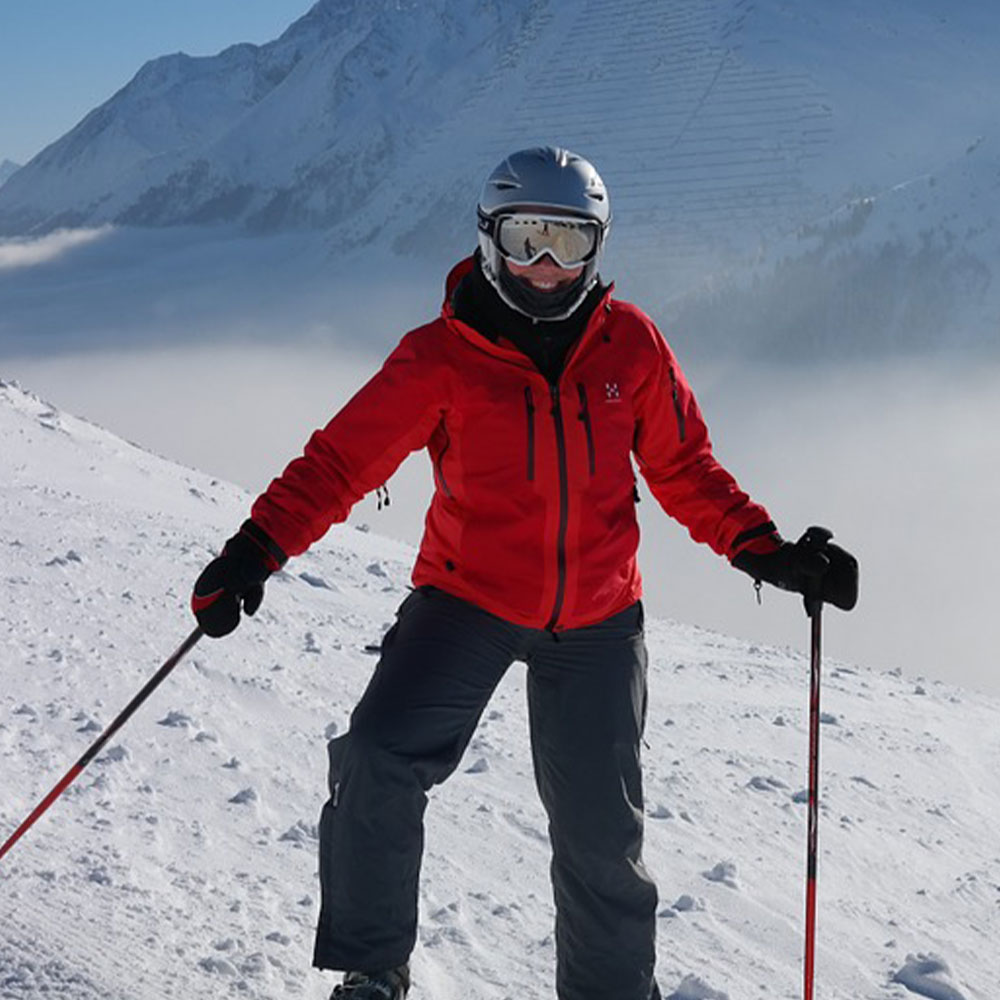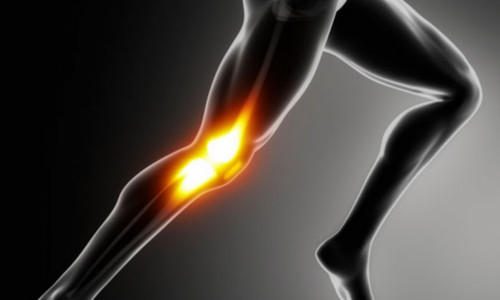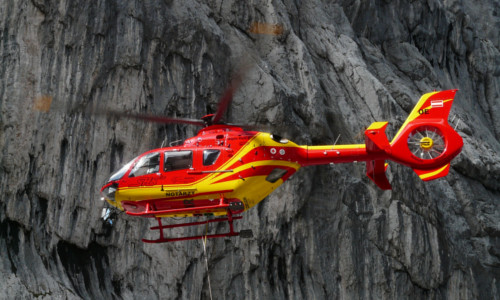How to Treat your Serious Knee Injury in 5 Simple Steps
Author

A keen runner, skier and nuts about cycling. Karl lives in Cumbria, where he loves encouraging his two children to follow in his outdoor lifestyle. Whilst out and about keeping active, Karl keeps a diary and shares it with Outdoor Look.
 Knees are definitely a vulnerable soft target of injury for runners and climbers. I remember going jogging in the morning, tripping and falling terribly on the ground, bruising my knees. The knee joints have a tendency to get injured, especially in the case of athletes. Presenting 5 crucial lessons from sports and adventures that got me hurt, bruised as well as encouraged to take careful measures during a serious knee injury.
Knees are definitely a vulnerable soft target of injury for runners and climbers. I remember going jogging in the morning, tripping and falling terribly on the ground, bruising my knees. The knee joints have a tendency to get injured, especially in the case of athletes. Presenting 5 crucial lessons from sports and adventures that got me hurt, bruised as well as encouraged to take careful measures during a serious knee injury.
Take a Break
The first thing one has to do after getting badly hurt is to pause the ongoing activity and take a break. You should not take this step for granted because it may seem simple but it is important. If you hear a crackling and sputtering sound in your knees during a sports activity, you simply must stop the ongoing adventure immediately before it becomes a frightening misadventure. I am a determined and disciplined outdoor person who loves the workouts, mountaineering and the host of such activities. Howsoever motivated I may feel to push through my body despite the injury, I realize the need to address the wounds instantaneously. I recommend a similar amount of precaution and care for you as well.
First Aid Comes First
The carelessness of extreme friction and force applied on knee joints can cost you their health and lead to damage. The next step post-injury is recovery. However, it depends on the severity of the wound to assess whether the recovery is going to take a longer or shorter period to heal completely. Ever heard of the P.R.I.C.E acronym? Well, it is a popular acronym that acts as mnemonic to unleash the fundamentals of the proper treatment of knee injuries.
Protect: Restrict any use of the injured area and protect it from suffering further impacts. Visit a doctor who will do a thorough analysis of the bruises and wounds, which may result in a recommendation of splint, brace or crutches.
Rest: Avoid putting stress or weight on the wounds after getting an injury. Evaluate the condition, whether your joints are stiff or muscles are weak, in this case you should avoid moving too early. If your joints are muscles have started healing, the change can be felt in the swiftness and strength of your movements and muscles.
 Ice: There may be bleeding in the joint after a severe injury. This may increase synovial liquid that lubricates our six types of joints. As a result, swelling may occur that can be reduced with the help of ice application which decelerates the congestion of fluid and blood. Use a covered ice-cubes pack. Avoid using it in case of high blood pressure or low sensation, as it can accelerate injury.
Ice: There may be bleeding in the joint after a severe injury. This may increase synovial liquid that lubricates our six types of joints. As a result, swelling may occur that can be reduced with the help of ice application which decelerates the congestion of fluid and blood. Use a covered ice-cubes pack. Avoid using it in case of high blood pressure or low sensation, as it can accelerate injury.
Compression: Compression is a technique used to reduce swelling. A bandage can be used to compress but only under medical supervision.
Elevation. Raise the level of your legs upwards while lying down with the help of pillows, as this will drain excessive fluid from the injury. Providing support under the knee proves to be quite helpful in quick treatment.
Medical Expertise
Serious injuries need to be examined and treated by medical professionals with qualified expertise and may need to be taken for emergency care in case of traumatic injuries. However, minor injuries can be treated with the help of first aid at home.
Diagnose the Problem
It is important to analyze the type of injury to determine the suitable treatment according to the medical needs of the patient. Again, I would pinpoint the need to seek medical treatment from a trusted medical expert.
Best Medical Treatment
There are a variety of treatments available which are designed to cure various injuries and to help in recovery. A few injuries in the joints may require physiotherapy, while others could be surgical.
Author

A keen runner, skier and nuts about cycling. Karl lives in Cumbria, where he loves encouraging his two children to follow in his outdoor lifestyle. Whilst out and about keeping active, Karl keeps a diary and shares it with Outdoor Look.
Categories
- Sport (28)
- Product Reviews (3)
- Team Outdoor Look (7)
- Mike Wild (2)
- Mike Payton (2)
- Suse Hammond-Pears (3)
- Snowboarding (12)
- Latest Offers (105)
- Shop Talk (1)
- Competitions (7)
- Walking (413)
- Lifestyle Fashion (8)
- Travel (86)
- Kit Guides (176)
- Workwear Clothing (6)
- Safety Workwear (4)
- Health/Fitness (289)
- Skiing (91)
- Great Outdoors (1316)
- Cycling (92)
- January 2025
- December 2024
- November 2024
- October 2024
- September 2024
- August 2024
- July 2024
- June 2024
- May 2024
- April 2024
- March 2024
- February 2024
- January 2024
- December 2023
- November 2023
- October 2023
- September 2023
- August 2023
- July 2023
- June 2023
- May 2023
- April 2023
- March 2023
- February 2023
- January 2023
- December 2022
- November 2022
- October 2022
- September 2022
- August 2022
- July 2022
- June 2022
- May 2022
- April 2022
- March 2022
- February 2022
- January 2022
- December 2021
- November 2021
- October 2021
- September 2021
- August 2021
- July 2021
- June 2021
- May 2021
- April 2021
- March 2021
- February 2021
- January 2021
- December 2020
- November 2020
- October 2020
- September 2020
- August 2020
- July 2020
- June 2020
- May 2020
- April 2020
- March 2020
- February 2020
- January 2020
- December 2019
- November 2019
- October 2019
- September 2019
- August 2019
- July 2019
- June 2019
- May 2019
- April 2019
- March 2019
- February 2019
- January 2019
- December 2018
- November 2018
- October 2018
- September 2018
- August 2018
- July 2018
- June 2018
- May 2018
- April 2018
- March 2018
- February 2018
- January 2018
- December 2017
- November 2017
- October 2017
- September 2017
- August 2017
- July 2017
- June 2017
- May 2017
- April 2017
- March 2017
- February 2017
- January 2017
- December 2016
- November 2016
- October 2016
- September 2016
- August 2016
- July 2016
- June 2016
- May 2016
- April 2016
- March 2016
- February 2016
- January 2016
- December 2015
- November 2015
- October 2015
- September 2015
- August 2015
- July 2015
- June 2015
- May 2015
- April 2015
- March 2015
- February 2015
- January 2015
- December 2014
- November 2014
- October 2014
- September 2014
- August 2014
- July 2014
- June 2014
- May 2014
- April 2014
- March 2014
- February 2014
- January 2014
- December 2013
- November 2013
- October 2013
- September 2013
- August 2013
- July 2013
- June 2013
- May 2013
- April 2013
- March 2013
- February 2013
- January 2013
- December 2012
- November 2012
- October 2012
- September 2012
- August 2012
- July 2012
- June 2012
- May 2012
- April 2012
- March 2012
- February 2012
- January 2012
- December 2011
- November 2011
- October 2011
- September 2011
- August 2011
- May 2010
- April 2010
- March 2010
- February 2010
- January 2010
- November 2009
- October 2009
- September 2009
Submit a Comment